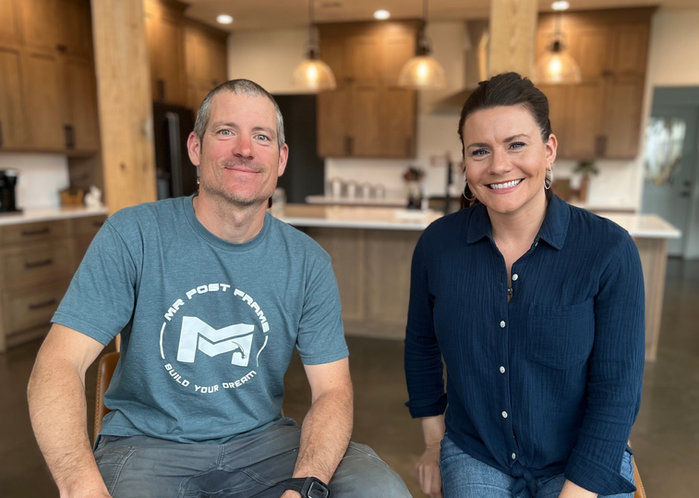Installing a Septic System
- MR Post Frame
- Jan 2, 2024
- 3 min read
Welcome back to the MAD County Build Series! It's October 22nd, and I'm braving the 50-mile-an-hour gusting winds today. So, putting up the steel is a no-go for now. The good news is the weather is supposed to be nice for the next couple of weeks, and it's dry. The concrete company won't be able to get to me until next week, so that part of the project is on hold.

Today, I managed to get my main water line all hooked up. There's a trench that stretches almost 600 feet from where they placed the pit to my house. It's still a bit wet to push all that dirt back in with my skid steer, but I'm hoping the combination of wind and sunshine will help me out. In the meantime, I'll work on the septic system.
I've got a septic tank on order, and it's set to arrive tomorrow afternoon. Let me tell you, if you decide to take on a septic tank system on your own – which most places allow – you'll need a bit of experience. A laser level is essential because, if you're going with a gravity-fed system, like I am, all your field lines have to be perfectly level.
I had my perk test done, so I can have a conventional system. The septic tank will be a dual chamber tank, with a three-inch drop on the outlet. There's also a distribution box that connects to my seven field lines. It's a bit of work, but it's worth it.
I've got my hole for the septic tank dug and compacted, and now I'm just waiting for the tank to arrive. The electric company also came by, hooked up my meter, put up a new pole, and installed a light. It's been a productive couple of days!

Finally, the septic tank arrives, and I can get to work. The pipe from my house lines up perfectly with the tank's inlet. There's a three-inch drop on the outlet, leading to the distribution box, which further connects to my seven field lines.
Now, I'm in the process of installing those field lines. I've got to make sure they have the right slope. The county I'm in requires inspections, so I called them up to make sure I'm meeting their specifications. It's always a good idea to check with your local inspector and ensure you're meeting their requirements.
I've got all my lines hooked up and leveled using Levelers to evenly distribute the water to each line. The septic chambers I'm using are from Infiltrator, and they've worked great for me. I've still got a lot of work ahead, but it's all coming together nicely.

Now that everything is set, I'm waiting for my inspection. If it passes, great! If not, I'll share what I need to fix. Doing this kind of work yourself can save you a ton of money, and I'm all about DIY.
I hope you enjoyed this episode, even if it wasn't the most exciting. But these are the kind of tasks that are essential when building in the country. You can save a lot by tackling them yourself. The more you learn and do, the more you can put in your pocket.
I'm taking this project all the way to the end, from concrete and porches to the finishing touches inside the house. Whether you're planning a similar project or just enjoy learning, we've got a lot in store. Thanks for reading!

Patreon Group
Interested in tackling your build on your own? If you want to explore the possibility of being your GC or self-building, our Patreon membership is for you! It's a community of like-minded people offering support, discounts, Q/A, and more.